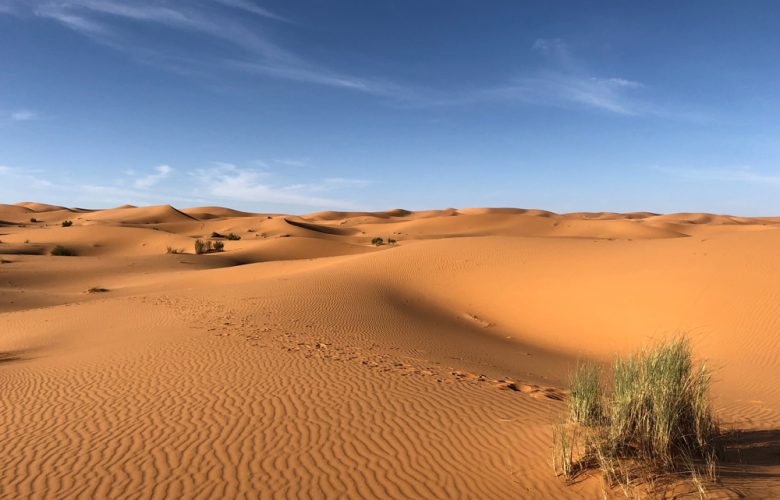The Sahara Desert is the world’s hottest desert, with the highest natural temperature ever reported (58 oC). The desert is approximately 3,320,000 square miles (8,600,000 km2) and is located in Northern Africa with an estimated population of 2.5 million. It has scorching hot days averaging in the 50s and freezing cold nights. The Sahara Desert is surrounded by many savannahs which get up to 2000mm of rainwater a year, while the desert only gets 50mm of water a year. The Red Sea on the East, the Mediterranean Sea to the north and the Atlantic Ocean to west, all surround the Sahara Desert. Metallic minerals like iron, tin, copper, manganese, lead, zinc, nickel, chromium, cobalt, silver and gold are rich in the Sahara Desert.
By sheltering from the heat in their burrows underground, animals like the jerboras- jumping desert rodents- and lizards adapt to the conditions of the Sahara. Other animals like the Fennec Fox have large ears containing many blood vessels that release heat to keep them cool. Camels are the main mode of travel because they are able to go long periods without eating or drinking water. The large ‘humps’ on their backs serve as stored food and are used for nourishment. Ostriches can drink salty water without being affects by a rise in their temperature. Most animals in the desert obtain water by eating food rich in water like the cactus. The gerbil, jerboa, Barbary sheep, oryx, dama deer, Libyan striped weasel, Anubis baboon, cape hare, spotted hyena, sand fox and secretary birds are some of the animals in the Desert.
Plants, like animals, must have special adaptations to survive in the Sahara Desert. The cactus has features that allow them to store water in their stem that can last long droughts. Another adaptation is that plants have broad leaves to reduce transpiration and some plants have very long roots that extend to underground rivers. Plants that live in the Sahara Desert include xerophytes, grasses, trees, shrubs and halophytes. Common desert plants include the olive, cypress, doum palm, oleander, date palm, acacia, Artemisia and thyme, while common types of grasses include Artistida, Pancium and Eragrostis.




